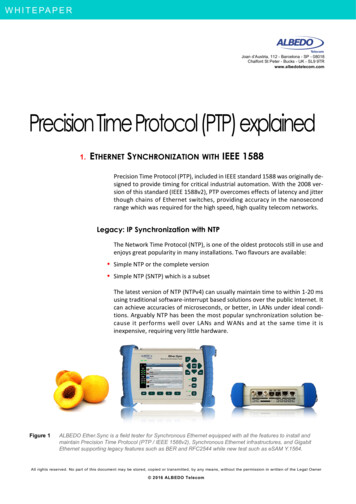
Transcription
W H I T E PA P E RJoan d’Austria, 112 - Barcelona - SP - 08018Chalfont St Peter - Bucks - UK - SL9 9TRwww.albedotelecom.comPrecision Time Protocol (PTP) explained1.ETHERNET SYNCHRONIZATION WITH IEEE 1588Precision Time Protocol (PTP), included in IEEE standard 1588 was originally designed to provide timing for critical industrial automation. With the 2008 version of this standard (IEEE 1588v2), PTP overcomes effects of latency and jitterthough chains of Ethernet switches, providing accuracy in the nanosecondrange which was required for the high speed, high quality telecom networks.Legacy: IP Synchronization with NTPThe Network Time Protocol (NTP), is one of the oldest protocols still in use andenjoys great popularity in many installations. Two flavours are available: Simple NTP or the complete version Simple NTP (SNTP) which is a subsetThe latest version of NTP (NTPv4) can usually maintain time to within 1-20 msusing traditional software-interrupt based solutions over the public Internet. Itcan achieve accuracies of microseconds, or better, in LANs under ideal conditions. Arguably NTP has been the most popular synchronization solution because it performs well over LANs and WANs and at the same time it isinexpensive, requiring very little hardware.Figure 1ALBEDO Ether.Sync is a field tester for Synchronous Ethernet equipped with all the features to install andmaintain Precision Time Protocol (PTP / IEEE 1588v2), Synchronous Ethernet infrastructures, and GigabitEthernet supporting legacy features such as BER and RFC2544 while new test such as eSAM Y.1564.All rights reserved. No part of this document may be stored, copied or transmitted, by any means, without the permission in written of the Legal Owner 2016 ALBEDO Telecom
Networking & Telecoms - P r e c i s i o n T i m e P r o t o c o l ( P T P ) e x p l a i n e dNTP should be able to deliver accuracy of 1-2 ms on a LAN and 1-20 ms on aWAN, it is far from guaranteed network-wide largely because of variable delays added by switches and routers.PTP Protocol DetailsALBEDO Telecom - Registered in Barcelona, Book 41613, Page 155, Sheet B-390886 - VAT : ESB6523022PTP requires a central Master clock and low-cost PTP slave clocks at remotesites. Master and slave network devices are kept synchronized by the transmission of timestamps sent within the PTP messages.A L B E D O - W H I T E P A P E R2 / 10Depending on how many ports has a network clock, it is referred by theIEEE 1588 standard as a Ordinary Clock (single port device) or a BoundaryClock (multi port device). The version IEEE 1588v2 standard also defines theconcept of Transparent Clocks that improve timing accuracy when the protocol runs in network paths containing intermediate switches (see Table 1).Table 1IEEE 1588v2 Device DescriptionDeviceDescriptionOrdinary ClockSingle-port device that can be a master or slave clockBoundary ClockMulti-port device that can be a master or slave clockEnd-to-end Transparent ClockMulti-port device that is not a master or slave clock but a bridge betweenboth forwarding / correcting PTP messagesPeer-to-peer Transparent ClockMulti-port device that is not a master or slave clock but a bridge betweenboth forwarding / correcting Sync and Follow-up messagesManagement NodeA device that configures and monitors clocksThe execution of PTP has two phases:1.Master-Slave Hierarchy Establishment. Ordinary and boundary clocks decidewhich port has the master or slave role in each link with the help of the BestMaster Clock (BMC) algorithm. Data from the remote-end of a path are provided by Announce message.2.Clock Synchronization. Slave clocks may have a positive or negative offsetswhen compared with their masters and latency from masters to slaves isalso unknown. PTP devices start a procedure to compute latencies andoffsets. These parameters will be used to adjust timing in slave devices.Once the master and slave hierarchies have been established, by observingthe clock property information contained in Announce messages sent by PTPdevices, the synchronization process starts (see Figure 2).Before synchronization between the master and the slave clock has beenachieved, it may exist an offset between both clocks. This offset is computedwith the help of the Sync message that are sent periodically (usually once every a few seconds) by the master to upgrade offset information in the slave.Sync messages may carry an accurate timestamp indicating the departuretime of the own message but this requires expensive time-stamping hard-Professional Telecom SolutionsTEST- LABOS - TA PS - WAN EMULATION - E1 - G BE - SYNCE - WLESS - LTE - 3G - IPTV - VoIP - QoS - SLA - ONEWAY - DATACOM - POLQ A - PT P - JITTER - WAND ER
Networking & Telecoms - P r e c i s i o n T i m e P r o t o c o l ( P T P ) e x p l a i n e dALBEDO Telecom - Registered in Barcelona, Book 41613, Page 155, Sheet B-390886 - VAT : ESB6523022ware which may not be available. In order to improve the protocolFollow Up messages carry timestamps for a previous Sync message allowinga more relaxed timestamping procedure and cheaper hardware. Sync procedure is based on multicast to enable a more efficient message transmissionand processing.The Sync mechanism, however, does not take into account propagation timeof Sync messages through the network. For this reason, the slave requests alatency measurement with a Delay Req message. Masters reply to aDelay Req with Delay Resp message. The timestamps the slave gets fromthe Delay Request-Response mechanism are used to correct Sync with amore accurate time estimation.A L B E D O - W H I T E P A P E R3 / 10The most difficult challenge of PTP is operation though chains of Ethernetswitches. Most switches store packets in local memory while the MAC address table is searched and the cyclic redundancy field (CRC) of the packet iscalculated before it is sent out to the appropriate port(s). This process introduces variations in the time latency of packet forwarding and damages accuracy of the PTP protocol. Version 1 of the PTP protocol deals with thisproblem by implementing Boundary Clocks within the switches. Version 2uses the more advanced concept of Peer-to-Peer Transparent Clock to dealwith the same problem.Transparent clocks do not participate in the master-slave hierarchy but theyprocess PTP messages by adding special correction fields within the messagewith their own estimations of packet residence times in the device and propagation delays from remote peers (which can be also a Peer-to-Peer Transparent Clocks). Network paths where Peer-to-Peer Transparent Clocks areemployed do not need the Delay Request-Response mechanism. This mechanism is replaced by a peer-to-peer path correction mechanism based on thePdelay Req and Pdelay Resp and Pdelay Resp Follow Up messages.Protocol EncapsulationPTP messages can be carried over a large family of protocols including IPv4,IPv6, IEEE 802.3 Ethernet, DeviceNET, ControlNET and IEC 61158 Type 10.The most important encapsulations are the IP and Ethernet variations (seeFigure 3).PTP Synchronization TestsThe PTP protocol was developed to enable the high accuracy time synchronization for Ethernet quality services and protocols, in particular for video,the new mobile networks such LTE, and critical enterprise data. Then it ishealthy to check the synchronization periodically to assure low error level, inorder to maintain a good QoS.ALBEDO Ether.Sync and Ether.Genius testers are devices that facilitate usersto verify the connectivity, quality, and synchronization of networks controlled by means of 1588v2 PTP. With the PTP functionality experts can nowProfessional Telecom SolutionsTEST- LABOS - TA PS - WAN EMULATION - E1 - G BE - SYNCE - WLESS - LTE - 3G - IPTV - VoIP - QoS - SLA - ONEWAY - DATACOM - POLQ A - PT P - JITTER - WAND ER
Networking & Telecoms - P r e c i s i o n T i m e P r o t o c o l ( P T P ) e x p l a i n e dMaster deviceSlave deviceTimestampscollectedIPt11t1, t2SyncALBEDO Telecom - Registered in Barcelona, Book 41613, Page 155, Sheet B-390886 - VAT : ESB6523022t22Follow Up3Delay Reqt1, t2, t3t3t1, t2, t3, t4t44Figure 2A L B E D O - W H I T E P A P E R4 / 10Delay RespOffset (t2 - t1) (t4 - t3)2Latency (t2 - t1) (t4 - t3)2Delay Request-Response mechanism used by the PTP. The basic parameters of Latency and Offset arecomputed from the t1, t2, t3 and t4 timestamps.Professional Telecom SolutionsTEST- LABOS - TA PS - WAN EMULATION - E1 - G BE - SYNCE - WLESS - LTE - 3G - IPTV - VoIP - QoS - SLA - ONEWAY - DATACOM - POLQ A - PT P - JITTER - WAND ER
Networking & Telecoms - P r e c i s i o n T i m e P r o t o c o l ( P T P ) e x p l a i n e dPTP over IPPTP messageEthernet Header6 vedIPv4 or IPv6 HeaderUDP HeaderALBEDO Telecom - Registered in Barcelona, Book 41613, Page 155, Sheet B-390886 - VAT : ESB65230222 bytes8 bytesTransparent ClockCorrectionsPTPMessageEthernet FCS4 bytesFlags2 bytesCorrection Fields8 bytesReserved4 bytesSource Port10 bytesSequence Id2 bytesA L B E D O - W H I T E P A P E R5 / 10PTP over EthernetEthernet Header6 bytesControlLogPTPMessageSync / Delay RequestEthernet FCSFigure 3Time Stamp8 bytes4 bytesIP and Ethernet encapsulations for PTP messages.emulate 1588v2 slave/master clocks, and ensure network QoS by generatingPTP messages and measure packet delay variation (PDV) stability over timewhich is a key parameter to maintain the quality.Case Study I: Set up a PTP Synchronization NetworkThe PTP protocol requires the establishment of time synchronization between master and slave nodes during the handshaking. This process occursconstantly to maintain the accuracy of the synchronization. Failure to establish PTP message connectivity, makes achieving synchronization impossibleProfessional Telecom SolutionsTEST- LABOS - TA PS - WAN EMULATION - E1 - G BE - SYNCE - WLESS - LTE - 3G - IPTV - VoIP - QoS - SLA - ONEWAY - DATACOM - POLQ A - PT P - JITTER - WAND ER
Networking & Telecoms - P r e c i s i o n T i m e P r o t o c o l ( P T P ) e x p l a i n e dSlaveMasterethernetMPSIP/ IPEther.SyncPTP protocolALBEDO Telecom - Registered in Barcelona, Book 41613, Page 155, Sheet B-390886 - VAT : ESB6523022Sync PDV graphFigure 4cntA L B E D O - W H I T E P A P E R6 / 10ALBEDO Ether.Sync and ALBEDO Ether.Genius are testers that can emulate up to eight streams at dataplane traffic, and PTP messages simultaneously.and disables support for synchronized services. With ALBEDO Ether.Sync orEther.Genius, users can emulate PTP messages to verify how works thefar-end protocol management (see Figure 4).Case Study II: Verify Accurate Time SynchronizationThe accuracy of the synchronization requires a permanent exchange of messages between master and slave clocks. However network perturbationsmay affect the latency of PTP messages because they have to pass-thru thesame queues than data packets. Therefore, a network with high utilizationcan affect the delay of end-to-end PTP messages and consequently synchronization could be degraded.To control this effects is required to measure packet delay jitter of the PTPmessages exchanged between master and slave clocks. With the ALBEDOEther.Sync or Ether.Genius, users can verify easily the proper delivery of PTPmessages by measuring PDV stability over time (see Figure 5).EthernetEther.Syncslave clockTDMEthernetethernetIP / IPMPStransparentIWFmasterPacket Jitter ResultsPTP protocolFigure 5With the ALBEDO Ether.Sync or ALBEDO Ether.Genius, users can verify the proper delivery of PTPmessages by measuring PDV stability over time.Case Study III: Generation of impairments to PTP messagesALBEDO Net.Storm generates those protuberances typical of IP and CarrierEthernet to test PTP message, devices and protocols that should be tolerantwith packet delay, jitter, loss, duplication, reordering, error and bandwidthvariations.Professional Telecom SolutionsTEST- LABOS - TA PS - WAN EMULATION - E1 - G BE - SYNCE - WLESS - LTE - 3G - IPTV - VoIP - QoS - SLA - ONEWAY - DATACOM - POLQ A - PT P - JITTER - WAND ER
Networking & Telecoms - P r e c i s i o n T i m e P r o t o c o l ( P T P ) e x p l a i n e dWith Net.Storm facilitates the verification of the IEEE 1588v2 synchronization by means of actual emulation of the real traffic conditions of IP networksthat are being used to transport PTP messages. Therefore it enables engineers to model and modify arbitrary live PTP packets.ALBEDO Telecom - Registered in Barcelona, Book 41613, Page 155, Sheet B-390886 - VAT : ESB6523022Net.Storm that can shape and manage up to 16 independent flows of traffic,then one of these flows can be programmed to filter PTP messages using forinstance the PTP port being used. Then an specific packet delay or jitter canbe applied to the PTP traffic to observe the consequences on the master/slave synchronization.A L B E D O - W H I T E P A P E R7 / 10For the set up of any filter on PTP messages it is important to know the following information IP / UDP Encapsulation PTP messages Ports: 319 (event) and 320 (general) Multicast IP addresses: 224.0.0.107 (peer delay messages), 224.0.1.129 (allother messages). Ethernet Encapsulation Ethertype: 0x88F7 Multicast MAC addresses:01-80-C2-00-00-0E (peer delay messages), 01-1B-19-00-00-00 (all othermessages)Users of Net.Storm could the emulated test environment that resembles actual traffic profile as observed on the real network (see Figure 6).Case Study IV: Packet Analysis of PTP MessagesDuring the installation of a IEEE 1588v2 network, PTP message connectivityproblems may occur between the master and slave units. For instance failureto establish PTP message connectivity makes achieving synchronization impossible and disables support for services. When troubleshooting these links,the ALBEDO Ether.Sync can be used in Terminate mode to capture PTP messaging on both the transmit and receive test ports up to 1 Gbit/s. In thismode, the ALBEDO Ether.Sync simultaneously generates, receives, and captures PTP messages on the circuit under test. Users can quickly identify higher layer protocol issues that may be associated with PTP messages and/orprovisioning.Case Study V: Test the Link Quality / Accurate SynchronizationThe protocol PTP is designed to work under network conditions includinghighly occupied networks. When there is a lot of contention the routing andswitching of PTP messages could therefore be affected causing potential badeffects like packet delay variation in PTP messages will ultimately affect synchronization because it depends upon consistently timed message reception. Both ALBEDO Ether.Sync and ALBEDO Ether.Genius can emulate dataplane traffic (up to eight streams) while PTP messages are transmitted simultaneously. Under these conditions, field engineers can verify if the new orthe existing PTP network are capable to operate properly under many different load scenarios (see Figure 7).Professional Telecom SolutionsTEST- LABOS - TA PS - WAN EMULATION - E1 - G BE - SYNCE - WLESS - LTE - 3G - IPTV - VoIP - QoS - SLA - ONEWAY - DATACOM - POLQ A - PT P - JITTER - WAND ER
Networking & Telecoms - P r e c i s i o n T i m e P r o t o c o l ( P T P ) e x p l a i n e dPacket JitterPacket JitterPacket JitterPacket DelayPacket JitterMTmobilesPTP messagesALBEDO Telecom - Registered in Barcelona, Book 41613, Page 155, Sheet B-390886 - VAT : ESB6523022LTEPTPNet.StormWAN emulationslaveEther.Syncvoice / tv /dataA L B E D O - W H I T E P A P E R8 / 10masterjitter/wandery.1564 & rfc2544SSM test/captureESMC test/captureEther.SyncSyncE testercntNet.StormWAN emulatorIP1 - Filter PTP messages only(in both directions)2 - Generate Impairments(delay, jitter, loss.)configresultsFigure 6Net.Storm and Ether.Sync are two ALBEDO instruments that combined are perfectly well prepared to test allthe PTP protocol. Ether.Sync does the analysis of the PTP messages and the quality of the synchronizationwhile the Net.Storm can generate -in a 100% controlled way- packets impairments to simulate accuratelyALBEDO Net.Storm is a WAN emulator capable to generate packet impairments. First it is necessary toidentify the PTP flow for instance using the 319 and 320 Ports. This allows to filter all the PTP messages andthen the next step is to generate the delay or the jitter you want with an accuracy better than ns.Professional Telecom SolutionsTEST- LABOS - TA PS - WAN EMULATION - E1 - G BE - SYNCE - WLESS - LTE - 3G - IPTV - VoIP - QoS - SLA - ONEWAY - DATACOM - POLQ A - PT P - JITTER - WAND ER
Networking & Telecoms - P r e c i s i o n T i m e P r o t o c o l ( P T P ) e x p l a i n e dFlow AFlow B.Flow HEther.SyncALBEDO Telecom - Registered in Barcelona, Book 41613, Page 155, Sheet B-390886 - VAT : ESB6523022Sync PDV graphFigure 7SwitchReference ClockEthernet / IPPTP protocolThere are tester that can emulate data plane traffic (up to eight streams) and PTP messages simultaneously.A L B E D O - W H I T E P A P E R9 / 10Selected Bibliography[1] Sargento S., Valadas R., Gonçalves J., Sousa H., IP-Based Access Networks for Broadband Multimedia Services,IEEE Communications Magazine, February 2003, pp. 146-154.[2] Ferrant J., Gilson M., Jobert S., Mayer M., Ouellette M., Montini L., Rodrigues S., Ruffini S., Synchronous Ethernet:A Method to Transport Synchronization, IEEE Communications Magazine, September 2008, pp. 126-134.[3] Vainshtein A., Stein YJ., Structure-Agnostic Time Division Multiplexing (TDM) over Packet (SAToP), IETF RequestFor Comments RFC 4553, Jun. 2006.[4] Vainshtein A., Sasson I., Metz E., Frost T., Pate P., Structure-Aware Time Division Multiplexed (TDM) Circuit Emulation Service over Packet Switched Network (CESoPSN), IETF Request For Comments RFC 5086, Dec. 2007.[5] ITU-T Rec. Y.1413, TDM-MPLS network interworking - User plane interworking, March 2004.[6] ITU-T Rec. Y.1453, TDM-IP interworking - User plane interworking, March 2006.[7] ITU-T Rec. G.8261, Timing and Synchronization Aspects in Packet Networks, February 2008.[8] ITU-T Rec. G.8262, Timing Characteristics of Synchronous Ethernet Equipment Slave Clock (EEC), August 2007.[9] ITU-T Rec. G.8264, Distribution of Timing Through Packet Networks, February 2008.[10] Metro Ethernet Forum Technical Specification MEF 8, Implementation Agreement for the Emulation of PDH Circuits over Metro Ethernet Networks, October 2004.[11] Metro Ethernet Forum Technical Specification MEF 18, Abstract Test Suite for Circuit Emulation Services overEthernet based on MEF 8, May 2007.Professional Telecom SolutionsTEST- LABOS - TA PS - WAN EMULATION - E1 - G BE - SYNCE - WLESS - LTE - 3G - IPTV - VoIP - QoS - SLA - ONEWAY - DATACOM - POLQ A - PT P - JITTER - WAND ER
test measurement WAN emulation packet capture synchronization consultancyALBEDO TelecomALBEDO Tel ecom deli vers soluti ons that enableTelecom infrastructures of all sizes totroubleshoot, monitor, and migrate missioncritical networks.From the deskto p to the data centre, fromAccess Network, Ethernet, Sync-E, PTP, Opticalbackbones, LTE, VoIP or IPTV applications.On local segments and across distributednetworks , ALBEDO enable TelecomOrganizations, Telecom Installers, NetworkOperators, Internet Servi ce Provi ders andCo ntents Suppliers to quickly check the healthof your network, verify SLA, or find and fixproblems .BenefitsRe sults . The ALBEDO Tel ecom to help Tel ecomindustry to make the most of the investment onnetwork infrastructure.Expertise . ALBEDO trainers, auditors,engi neers and consultants provi deindustry-leading knowledge to address theunique needs of customers.Integration. ALBEDO integrates disparatetelecom resources and applications, realizingnew busi ness effi cienci es.Agility . ALBEDO increases the ability ofcustomers to respond quickl y to new marketopportunities and requirements.Coverage. ALBEDO offers s oluti ons thatfacilitates the mi gration and the roll-out to newtelecom archi tec tures.in Test we TrustAmericas (US & Canada)mjs@albedotelecom.com 1 647 233 7353Europerbt@albedotelecom.com 34 610 292 763Indiaprem.sethi@albedo.biz 91-98110 55459Switzerlandsilvan.imhof@albedotelecom.ch 41 (0)31 853 14 56UKjpr@albedotelecom.co.uk 44 (0) 1865 601008World Channelssales.telecom@albedo.biz(find out our nearest rep)aims LEARN from business models and case studies UNDERSTAND the potential of interoperability with legacy services EXPERIENCE specialised synchronization network solutions ASSESS different solutions for installation and maintenance
TEST- LABOS - TAPS - WAN EMULATION - E1 - GBE - SYNCE - WLESS - LTE - 3G - IPTV - VoIP - QoS - SLA - ONEWAY - DATACOM - POLQA - PTP - JITTER - WAN DER NTP should be able to deliver accuracy of 1-2 ms on a LAN and 1-20 ms on a WAN, it is far from guaranteed networ k-wide largely b


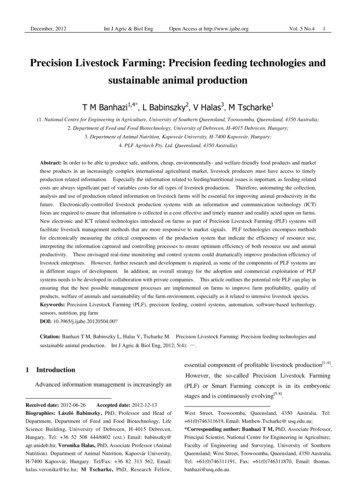


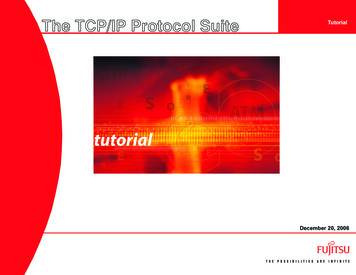
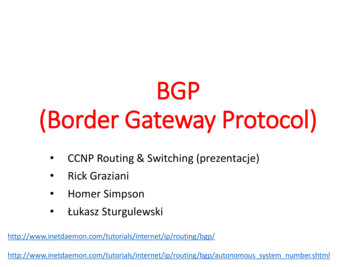

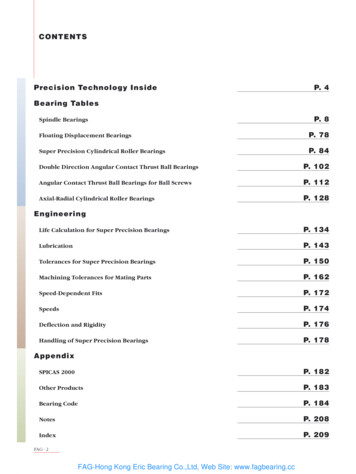

![[MS-OFBA]: Office Forms Based Authentication Protocol](/img/3/ms-ofba.jpg)